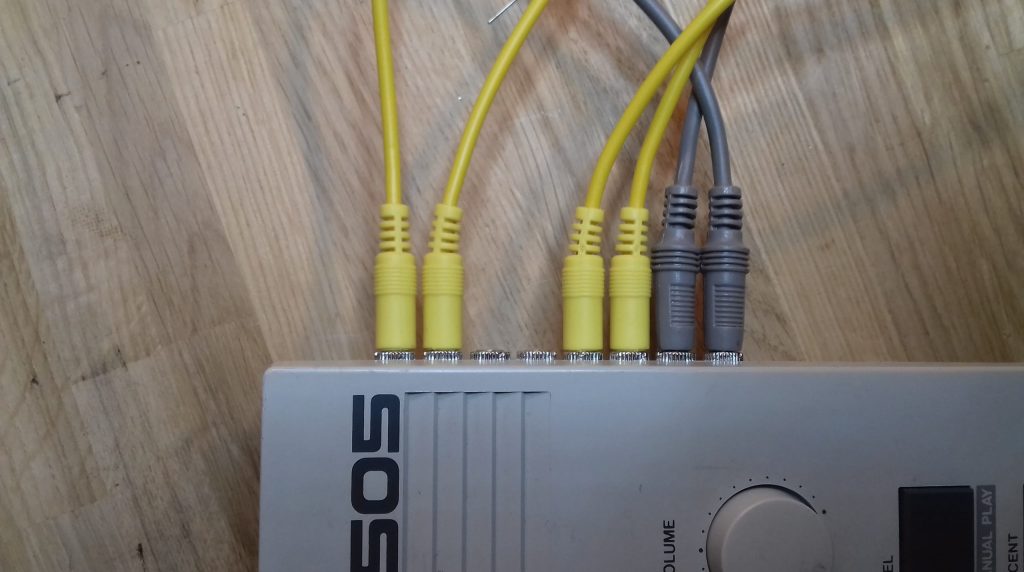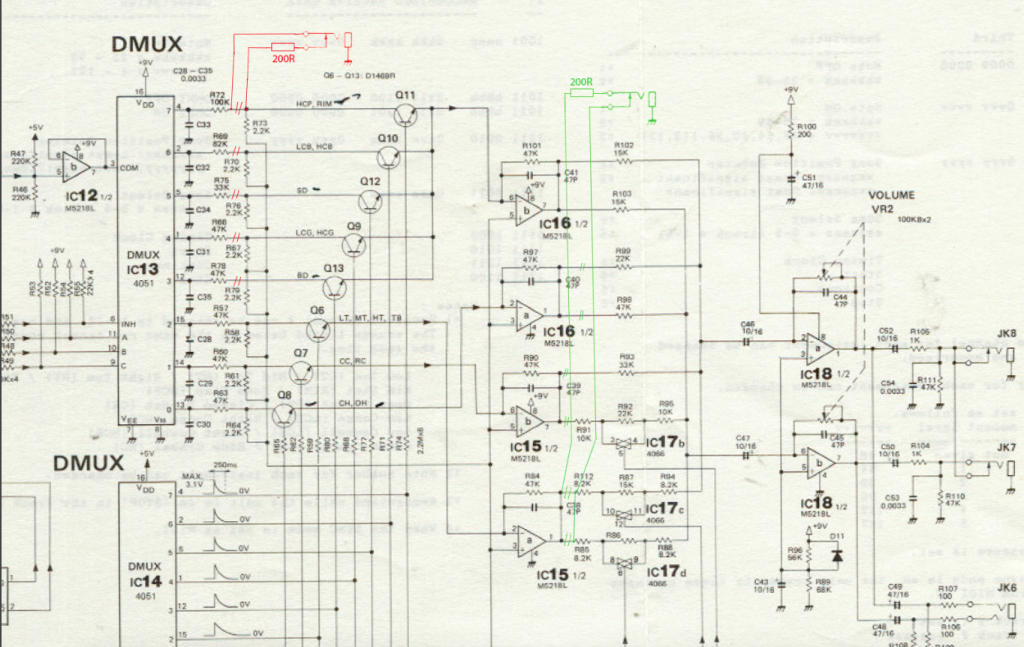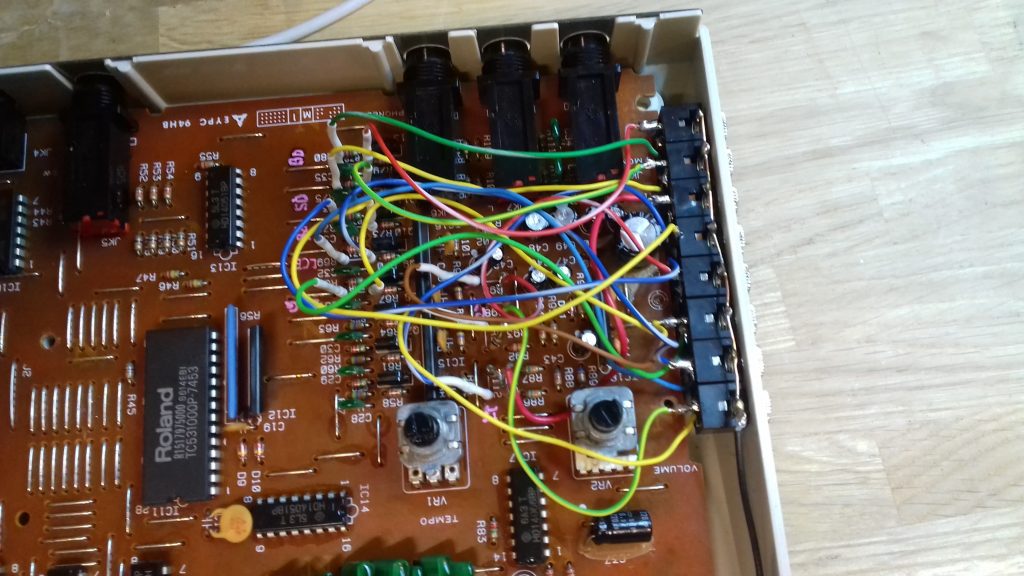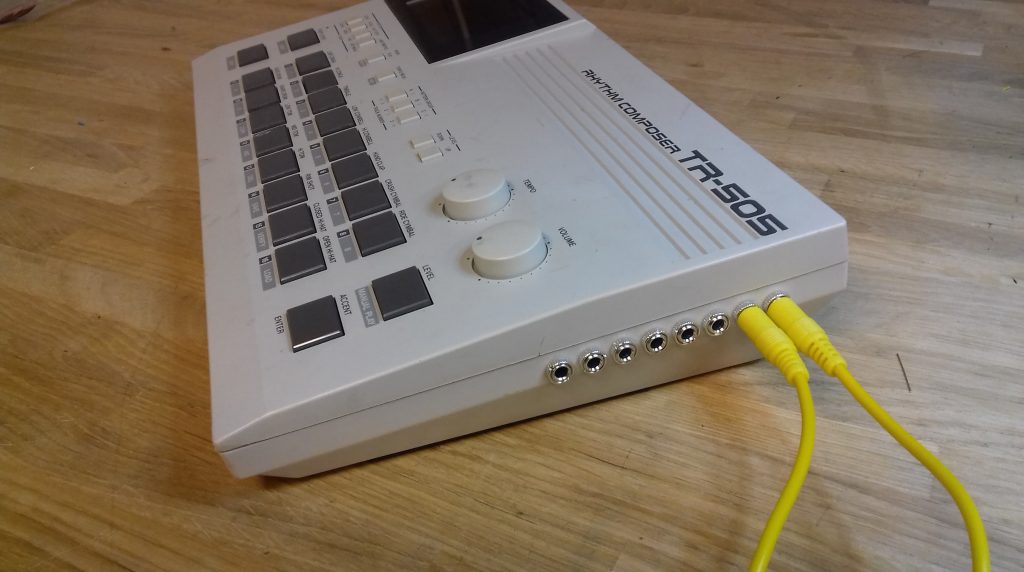
Descriptions of Individual Audio Outputs modifications for the Roland TR-505 have been around for a while. I searched the web for sources that describe how to do the mod:
- https://www.circuitbenders.co.uk/drummachine/TR505.html
- https://masutopedals.wordpress.com/2017/04/20/roland-tr-505-stuff/
There are many sources talking about having it done, without explaining how:
The problem
However, the modifications that are described share one problem: They don’t handle Cymbals and Open HiHat very well. That is because the signal is tapped too early in the output summing circuitry, before the volume envelope is applied. Citing circuit benders’ description of their mod:
“Longer sounds such as the crash and hats consist of a compressed sample, with a primitive envelope applied to it so it sounds vaguely realistic. As the outputs have to be sourced in the circuit before the envelope is applied, some sounds will not be identical to the main mix outputs.”

How to do it better
To sort it out, you need to tap audio from (LT MT HT TB) (CC RC) and (CH OH) after transistors Q6, Q7 and Q8 respectively, because the transistors apply the volume envelope to the audio signals. However the signal can’t be taken directly from the emitter of the transistor, because it’s is very weak at this point, and you will introduce noise, hum and instability. Instead, we take it after the buffers / amplifiers IC16 and IC15 respectively.

You will use the standard mod spots for (HCP RIM) (LCB HCB) (SD) (LCG HCG) and (BD), and the green ones for (LT MT HT TB) (CC RC) and (CH OH). I used breaking 3.5 mm jacks, so the sound is removed from the R / L mix when a cable is inserted in the individual output jack.

What you lose
You are going to lose the predefined, fixed panning that some of the sounds in the TR-505 have. But you will have all sounds on individual mixer channels to pan, equalize and add effects.
Also, the volume levels of the individual outputs may not be exactly the same as on the R / L outs.
